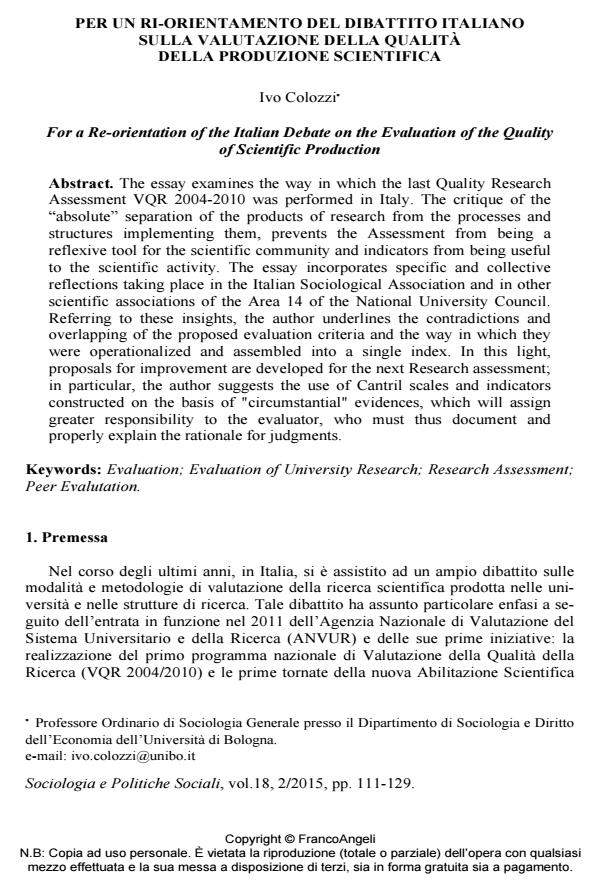For a Re-orientation of the Italian Debate on the Evaluation of the Quality of Scientific Production
Journal title SOCIOLOGIA E POLITICHE SOCIALI
Author/s Ivo Colozzi
Publishing Year 2015 Issue 2015/2
Language Italian Pages 19 P. 111-129 File size 85 KB
DOI 10.3280/SP2015-002006
DOI is like a bar code for intellectual property: to have more infomation
click here
Below, you can see the article first page
If you want to buy this article in PDF format, you can do it, following the instructions to buy download credits

FrancoAngeli is member of Publishers International Linking Association, Inc (PILA), a not-for-profit association which run the CrossRef service enabling links to and from online scholarly content.
The essay examines the way in which the last Quality Research Assessment VQR 2004-2010 was performed in Italy. The critique of the "absolute" separation of the products of research from the processes and structures implementing them, prevents the Assessment from being a reflexive tool for the scientific community and indicators from being useful to the scientific activity. The essay incorporates specific and collective reflections taking place in the Italian Sociological Association and in other scientific associations of the Area 14 of the National University Council. Referring to these insights, the author underlines the contradictions and overlapping of the proposed evaluation criteria and the way in which they were operationalized and assembled into a single index. In this light, proposals for improvement are developed for the next Research assessment; in particular, the author suggests the use of Cantril scales and indicators constructed on the basis of "circumstantial" evidences, which will assign greater responsibility to the evaluator, who must thus document and properly explain the rationale for judgments.
Keywords: Evaluation; Evaluation of University Research; Research Assessment; Peer Evalutation
- Caratteristiche, tendenze e mutamenti della produzione scientifica sociologica nell'era della valutazione. Analisi esplorativa di un caso di studio Simona Colarusso, Annalisa Di Benedetto, in RIV Rassegna Italiana di Valutazione 66/2017 pp.120
DOI: 10.3280/RIV2016-066008
Ivo Colozzi, Per un ri-orientamento del dibattito italiano sulla valutazione della qualità della produzione scientifica in "SOCIOLOGIA E POLITICHE SOCIALI" 2/2015, pp 111-129, DOI: 10.3280/SP2015-002006